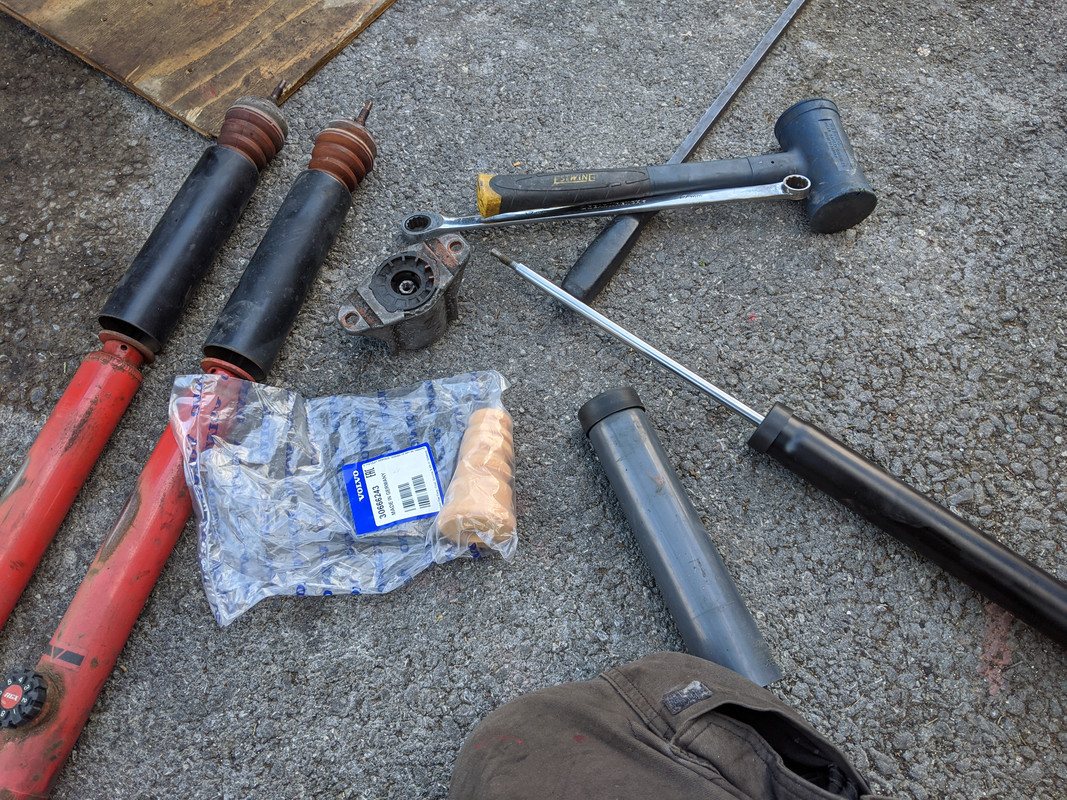Hi Steve. I can explain that. Yes..Hussein is correct...his Bilsteins did indeed come with internal bumpstops. And yes, they ARE the primary ( and only) suspension bump stop for that application ( VW Rabbit ).
This is a pic of VW Rabbit front strut. Actually very similar to an X1/9 strut.
View attachment 36851
The OE bump stop on the Rabbit was simply a rubber stop like this that slipped tightly over the exposed 20mm shock shaft. And got squashed between the upper spring perch and the gland nut at the top of the insert when it came into play.
View attachment 36852
all is pretty simple so far. If...you replace the insert in that strut housing...of course you just re-use the original bump stop. As the replacement inserts from Boge, Gabriel, Koni, KYB, etc...all have of course a 20mm shaft.
Except.....the Bilstein insert for a Rabbit ( actually like all Bilstein monotube inserts ).....due to their inverted design actually have a shaft diameter of about 35mm !!! And look like this when installed in the housing: ( yeah I know pic is not of exact application but you get the idea )
View attachment 36853
so...2 problems here. First ....as the shock shaft is now about 35mm....there is no way you could re-use the existing VW OE bump stop - it only has a 20mm ID. Even if Bilstein supplied a larger ID bump stop of the same length and configuration.....there is no longer a "landing spot" for it on top of the gland nut !! almost zero room there now...
So....in this case...Bilstein simply instead built-in a new bump stop...internally inside the new strut insert. With a similar length and rate. Functioned just like the original external bump stop.....and of course replace it entirely. They had no other real option in this case. Understand ?
If...for example..Bilstein made a monotube strut insert for say an early X1/9....they would not have had this problem...as the Fiat bump stop was a different system ( not tightly over the shock shaft ). They could have made an insert with the same travel as stock...and you could have retained the stock Fiat OE bump stop.
But...for any car that utilized a bump stop system like the VW.......they would surely have to engineer an insert with an internal bump stop that indeed functioned as the "full primary suspension bump stop"
Yes.....this all means that I have some reservations about using Bilstein monotube VW Rabbit inserts on an X1/9. i'd prefer to be able to choose my own bump stop length and rate.
Hope this explains things. Doug

